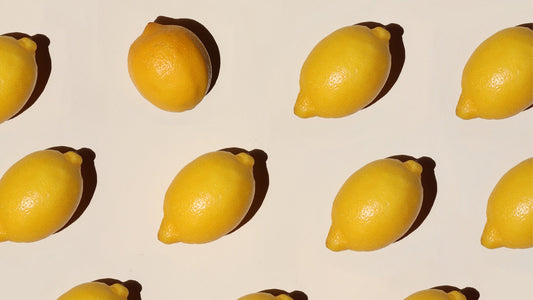For many, coffee is an essential morning ritual – a comforting embrace that kickstarts our day. Its flavors, spanning from bright fruity notes to deep chocolatey undertones, can offer a sensory journey with every sip. One term that frequently comes up when discussing coffee flavor profiles is 'acidity.' For those seeking a smoother, gentler cup, understanding and controlling coffee's acidity becomes crucial. In this comprehensive guide, we'll delve into the world of coffee acidity, explore how to purchase low-acid coffee, and share brewing tips to ensure your brew is as mellow as you desire.
Understanding Acidity in Coffee
Acidity in coffee can be a touch confusing, primarily because it denotes two different things: the actual pH level of the coffee (scientific acidity) and the perceived acidity in taste (brightness or liveliness of the coffee).
-
Scientific Acidity:
This refers to the actual pH level of the coffee. On the pH scale, 7 is considered neutral. Anything below 7 is acidic, while anything above is alkaline. Most coffees typically fall in the range of 4.5 to 6. The lower the number, the more acidic the coffee.
-
Perceived Acidity:
When coffee experts talk about a coffee's acidity, they're usually referring to its flavor profile. A coffee with high perceived acidity will taste bright and can have flavors reminiscent of certain fruits. It's this kind of acidity that's often prized in beans from regions like East Africa.
Factors Affecting Coffee's Acidity
Several factors influence both the scientific and perceived acidity of coffee:
-
Bean Origin:
Coffees from high-altitude regions, especially East African countries, tend to have a brighter, more pronounced acidity. On the other hand, beans from lower altitudes, like those from Sumatra, tend to be more mellow.
-
Processing Method:
Washed coffees, where the cherry's pulp is removed before drying, generally exhibit a brighter acidity than natural or dry-processed coffees. Additionally, decaffeinated coffees, especially Swiss Water Process decaffeinated coffee, will exhibit less acidity due to the additional processing that the beans go through to remove the caffeine.
-
Roast Level:
Lighter roasts tend to preserve the bean's natural flavors, which often include brighter acidic notes. Dark roasts, conversely, mellow out these flavors, leading to a less acidic taste.
Buying Low Acid Coffee
If you're looking to enjoy coffee that's easier on the stomach and mellow in flavor, here's how to make sure you're buying low-acid coffee:
-
Check the Origin:
As mentioned, beans from lower altitudes are usually less acidic. Look for coffees from places like Sumatra, Brazil, or even parts of Guatemala.
-
Roast Level:
Opt for medium to dark roasts. They might have lost some of their bright, fruity notes, but they'll be gentler on your stomach.
-
Brands Specializing in Low Acid Coffee:
Some brands specifically offer low-acid coffee options. These beans are treated to reduce their acidity without compromising too much on flavor.
-
Read Descriptions:
If buying from a specialty roaster, read the tasting notes. Beans described as 'mellow,' 'smooth,' or 'deep' are likely to have a lower perceived acidity than those labeled 'bright,' 'crisp,' or 'tart.'
Brewing Tips to Reduce Acidity
Even if you've chosen a bean known for its mellow profile, your brewing method can influence the final cup's acidity. Here are some tips:
-
Cold Brew:
Cold brewing coffee tends to result in a brew with lower acidity than its hot-brewed counterparts. The prolonged steeping time at a colder temperature extracts fewer of the compounds responsible for acidity.
-
Opt for a Coarser Grind:
A coarser grind reduces the surface area exposed during brewing. This means fewer acidic compounds are likely to be extracted. This principle is especially effective for methods like French press and cold brew.
-
Adjust Brewing Time:
If using a method where you can control the brewing time (like a French press or pour-over), try reducing it slightly. A shorter extraction can result in a cup with less pronounced acidic notes.
-
Water Temperature:
Just off the boil (about 195-205°F or 90-96°C) is recommended for most brewing methods. However, if you find your coffee too acidic, try reducing the temperature slightly. Cooler water extracts fewer acidic compounds.
-
Use Clean Equipment:
Ensure your coffee equipment is clean. Old coffee residues can introduce unwanted flavors and increase perceived acidity. This is also just good advice generally to ensure a clean environment for brewing.
-
Experiment with Water:
The mineral content of your water can influence extraction. Some people find using bottled or filtered water can result in a smoother cup.
Coffee's world is vast and varied, with flavors spanning the spectrum from bright and tangy to deep and mellow. If you're someone who loves the idea of coffee but is put off by acidity, either for taste reasons or because it doesn't agree with your stomach, there's still a brew out there for you. By understanding the factors that influence acidity, choosing the right beans, and tweaking your brewing parameters, you can enjoy a cup that's easy of your stomach and body.




